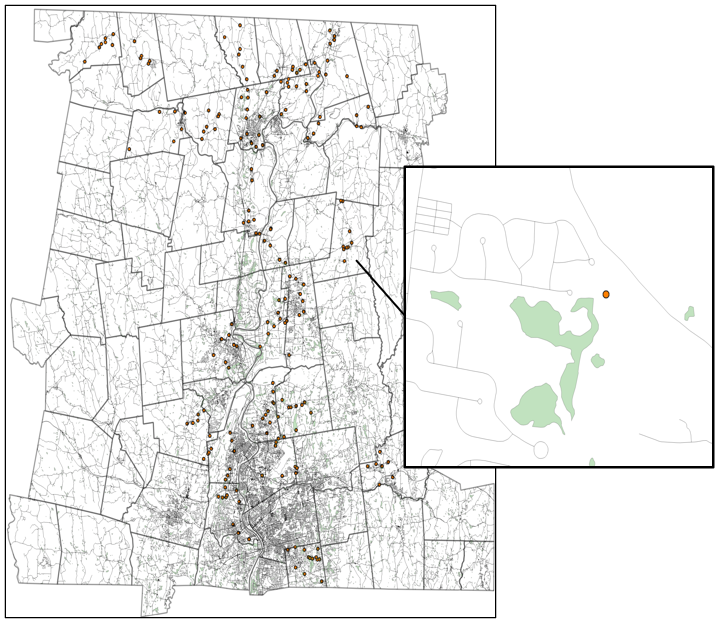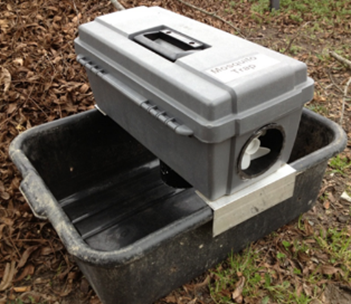Adult mosquito surveillance is the backbone for all integrated mosquito management programs, as these data collected are used to analyze trends in vector mosquito populations, the prevalence of arboviruses, including Eastern equine encephalitis, Jamestown Canyon virus, and West Nile virus. Essentially, adult mosquito surveillance is about gathering data to make informed decisions for effective mosquito management and protecting public health.
Trap Site Selection
Mosquito habitats vary widely, with red maple swamps and wetlands with emergent vegetation being key examples. Red maple swamps support Culiseta melanura, a primary EEE vector, which relies on crypts—roots covered in sphagnum moss—for overwintering. Wetlands with emergent vegetation sustain Coquillettidia perturbans, a vector for EEE and WNV, by providing cattail roots for oxygen access. These examples highlight the diverse habitats influencing mosquito populations. For more on vector species and habitat, click here.
To monitor the above-mentioned species and other vector mosquito species, PVMCD staff will set up several types of specialized adult mosquito surveillance traps at 212 established trap sites throughout the season. Geographic Information Systems (GIS) play a critical role in identifying optimal trap locations by analyzing habitat features, mosquito population data, and proximity to populated areas. The image below highlights approximate trap site locations and includes a zoomed-in section of the map, showing a red maple swamp situated between multiple neighborhoods.
At the same time, we must also account for man-made habitats, which significantly contribute to mosquito populations and the spread of disease. Containers such as catch basins, abandoned pools, buckets, flower pots, and old tires, commonly found in and around neighborhoods, often provide ideal breeding grounds for vector mosquito species. These artificial environments, combined with nearby natural habitats, play a critical role in shaping mosquito dynamics and guiding trap site selection. Click here to learn more about reducing artificial habitat where you live.

Surveillance Traps
CDC Miniature Light Trap: This trap is baited with carbon dioxide (CO2) and designed to attract a variety of mammal-biting mosquitoes. The use of CO2 mimics the exhalation of mammals, making a very effective tool for attracting mosquitoes seeking blood-meals. CDC Miniature light traps can also be baited with Octenol, a chemical that is used to attract Aedes albopictus mosquitoes.

Gravid Trap: Characterized by its unappealing aroma, the gravid trap is baited with hay-infused water. This unpleasant scent is specifically attractive to Culex pipiens and restuans mosquitoes, which are considered primary vectors in the spread of WNV.

Other Traps/Surveillance Tools Utilized by the District:
| Trap Name | Targeted Species |
| BG Sentinel | Ae. albopicus |
| Resting Boxes | Cs. melanura |
| Ovicups | Ae. albopictus eggs |
